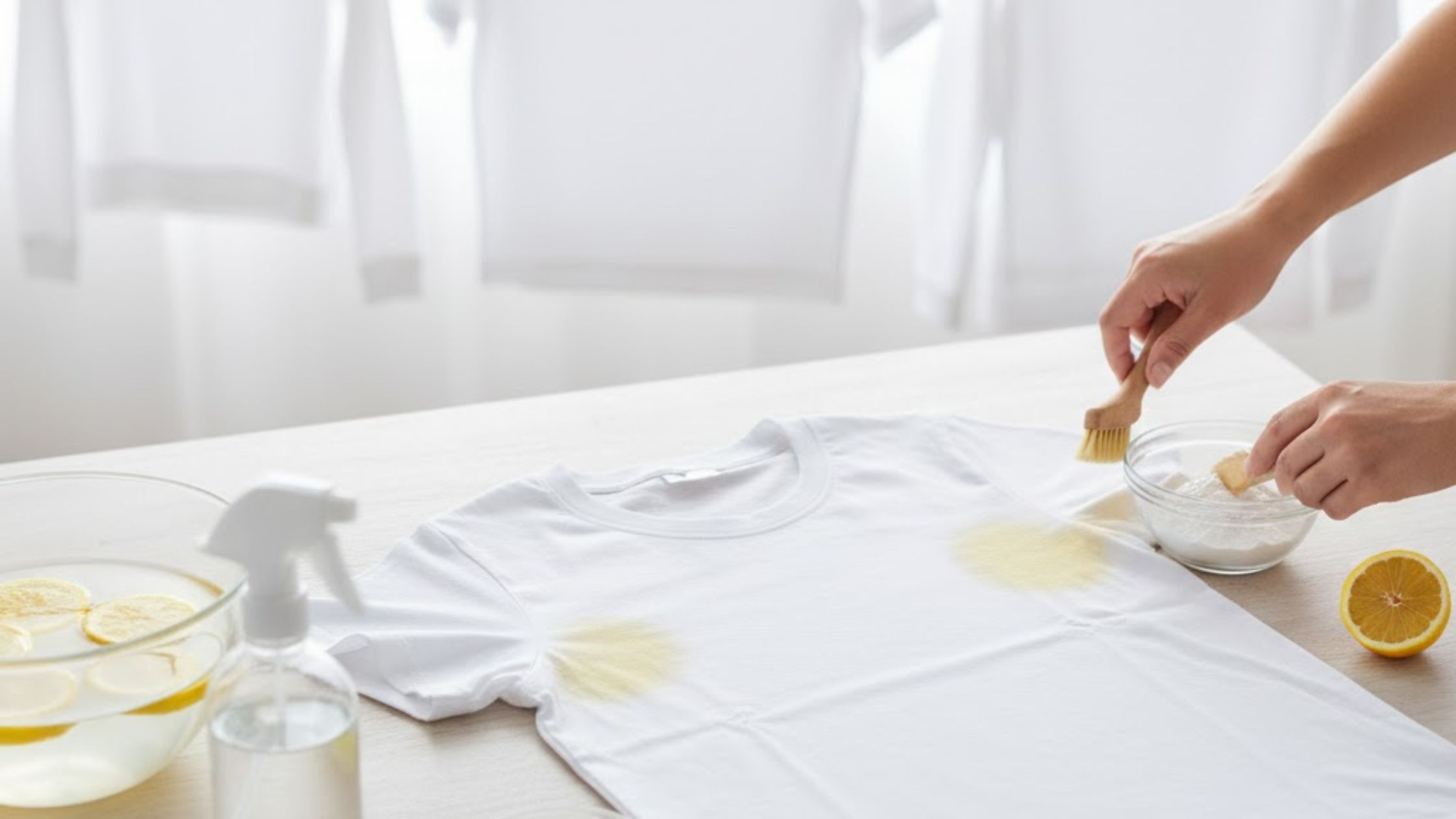If your washer smells musty or your clothes come out less fresh than they should, you’re probably wondering how to properly clean a washing machine. Even the best washers build up detergent film, lint, and mildew over time, especially in humid places like Manville, where moisture lingers in basements and laundry rooms. That’s why many locals turn to a trusted Washing Service in Manville, RI, for deep-cleaning support. Here’s the thing: a quick rinse cycle won’t fix it. You need to deep-clean the inside, outside, and all those hidden corners that trap grime.
In this guide, we’ll break down how to clean a washing machine step by step and show you how to prevent odors for good.
Why Your Washing Machine Gets Dirty?
Knowing how to clean a washing machine starts with understanding why it gets dirty in the first place. Your washing machine gets dirty because detergent residue, fabric softener buildup, and trapped moisture create the perfect environment for mold, bacteria, and odor to form. Over time, this buildup sticks to the drum, hoses, and seals, causing musty smells and leaving clothes less fresh even after washing.
To understand how to stop that grime from building up, let’s break down the main causes and how you can prevent them before they turn into bigger cleaning problems.
Common Causes of Washer Buildup
Washing machines collect layers of soap film, lint, and minerals that cling to the drum and hoses. These residues mix with laundry dirt and moisture, creating a sticky buildup and foul odors that spread with every cycle. If you’ve ever wondered how to clean a washing machine’s surfaces effectively, the secret is to reduce the sources of buildup before they spread.
To keep your washer fresh and working efficiently, focus on reducing these common causes:
- Detergent residue: Using too much soap leaves a waxy coating that traps odor-causing bacteria.
- Hard water minerals: Limescale from Rhode Island’s hard water can cling to internal parts and seal surfaces.
- Moisture retention: Closing the washer door right after washing traps humidity, feeding mildew growth.
How to Prevent a Dirty Washing Machine?
Preventing residue and mold is simple when you make cleaning a regular habit. Monthly maintenance and quick post-laundry steps keep the washer’s drum, filters, and gaskets clean, so every load comes out fresh and odor-free.
Try incorporating these habits into your laundry routine:
- Air out the drum: Leave the washer door open after each cycle to let moisture evaporate.
- Clean the gasket weekly: Wipe around the rubber seal with a vinegar-dampened cloth to remove grime.
- Use the right detergent: Choose high-efficiency (HE) detergents and measure properly to avoid excess buildup.
Following these steps ensures your washer stays cleaner longer, your clothes smell better, and your appliance runs efficiently every cycle.
What’s the Difference Between Deep Cleaning and Light Maintenance for Your Washing Machine?
The main difference comes down to depth and frequency. Light maintenance keeps your washer fresh with quick weekly wipe-downs, while a deep clean removes hidden residue, bacteria, and buildup inside the drum, hoses, and seals using hot water and a cleaning agent. Learning how can i clean washing machine parts correctly helps prevent odor, extend lifespan, and keep every load fresh. Both are essential for odor-free, efficient performance..
Here’s how to balance both routines so your washing machine stays spotless and runs smoothly year-round:
- Light Maintenance: Wipe the drum, gasket, and detergent drawer weekly to prevent moisture and detergent buildup.
- Deep Cleaning: Run an empty hot-water cycle with white vinegar, baking soda, or washer cleaner every few weeks.
- Adjust by Usage: In humid areas like Manville, deep clean every 3-4 weeks; in drier spaces, every 6-8 weeks is enough.
How Do You Properly Clean a Washing Machine Step by Step?
To clean a washing machine properly, start by clearing out debris, wiping down visible grime, and running a hot cleaning cycle with the right solution, such as vinegar, baking soda, or washer tablets. Finish by rinsing, cleaning the detergent drawer and filter, and letting everything air dry completely to prevent mold and odors.
Now, let’s walk through the exact steps to clean your washer inside and out without missing a single hidden spot.
1. Preparing Your Washing Machine for Cleaning
Before using any cleaner, make sure the washer is ready. Start by removing items, checking seals, and wiping visible buildup. This first step sets the foundation for an effective deep clean that targets grime you can’t see. If you’re wondering how to safely clean front-loading washing machine parts, this is where it begins.
- Empty the washer: Remove clothes, detergent cups, and trays before cleaning.
- Inspect hard-to-reach areas: Check the drum, gasket, and seal for lint, coins, and other debris.
- Wipe visible grime: Use hot water and mild detergent to clean the door and inner surfaces.
2. Running the Cleaning Cycle the Right Way
Once the surface is clean, it’s time to deep-clean the interior. Running a hot-water cycle breaks down soap scum, bacteria, and odor buildup that regular washes miss, especially in front-loading models where moisture lingers.
- Select the correct cycle: Use the “Tub Clean” or “Clean Washer” option if available.
- Use hot water: Set it to the hottest setting to dissolve buildup and kill bacteria.
- Empty Cleaning Cycle: If no cleaning cycle run an empty normal cycle with hot water and your chosen cleaner.
3. Adding the Right Cleaner and Finishing Touches
The cleaner you use matters as much as how you use it. Natural options like vinegar and baking soda work well for light buildup, while bleach or commercial tablets help sanitize heavily soiled machines. Afterward, always rinse and dry to seal in freshness.
- Add your cleaner: Use 2 cups of vinegar or ½ cup of baking soda for natural cleaning.
- Rinse and wipe again: Run a second hot rinse, then wipe all interior surfaces.
- Clean and air dry: Remove and wash the detergent drawer and filter, then leave the door open for at least an hour.
By following these steps in order, your washer stays fresh, mold-free, and ready to deliver cleaner, better-smelling laundry every time.
Bonus Tip: How To Keep Your Washing Machine Fresh and Odor-Free?
Keeping your washing machine clean isn’t a one-time job; it’s a routine. Small daily habits prevent mold, odors, and residue from building up again. The goal is to keep air circulating, reduce moisture, and use just the right amount of detergent so your washer stays fresh and efficient for years.
Here’s how to make those habits part of your regular laundry routine:
- Use the right detergent: Choose HE detergent for HE machines and measure carefully to avoid residue buildup.
- Let it breathe: Keep the washer door open after each load to let moisture evaporate naturally.
- Wipe and inspect: After your final load of the day, dry the gasket and glass, and check hoses for small leaks.
Why Manville Homeowners Choose Laundry Lady?
So, after all that about cleaning and caring for your washer, here’s what many local homeowners realize: sometimes DIY doesn’t cut it. In Manville, people often face clogged filters, odor that won’t quit, or hidden mold in seals. That’s where Laundry Lady steps in with a professional, local solution you can trust.
You have tried every cleaner and method, but your washer still smells or leaves residue in hard-to-reach spots. Laundry Lady offers deep-clean services and full machine care that get into the nooks you miss. So your washer stays fresh without you having to lift a finger.
- Washing Service: Use our industrial-grade machines to clean your clothes in a perfectly maintained, residue-free environment.
- Folding & Finishing Service: We handle folding and finishing so your laundry comes back crisp and ready to wear.
- Drying / Professional Dry Service: Our drying systems are calibrated to avoid over-drying or lingering moisture that can invite mold.
For a detailed look at current laundry service cost trends, don’t miss our 2025 pricing guide.
Final Thoughts
Knowing how to clean a washing machine is the simplest way to keep your laundry fresher, your clothes cleaner, and your appliance running longer. By deep cleaning your washer every few weeks, wiping it down after each use, and letting it dry properly, you prevent odor, mold, and costly breakdowns. Think of it like regular car maintenance, simple, routine care that saves you time and money in the long run. And if you ever feel your washer needs more than a DIY clean, Laundry Lady in Manville is ready to help. Our professional laundry and machine care services keep your clothes spotless and your washer performing at its best.
For a cleaner, hassle-free laundry experience, call +401-429-6341 or visit Laundry Lady.
Frequently Asked Questions (FAQs)
1. What’s the fastest way to deep clean a washing machine?
Run an empty hot cycle with a washer cleaner or 2 cups of white vinegar, then a second hot rinse. Wipe the drum, gasket, and detergent drawer, and clean the drain filter if accessible. Leave the door open to dry. Do this monthly if you do frequent loads or live in humid areas like Manville.
2. How to clean a front-loading washing machine without damaging the seal?
Pull back the gasket, remove lint, then wipe with a mild cleaner or diluted vinegar. For visible mold, spot-treat with diluted bleach, rinse, and dry thoroughly. Finish with a hot cleaning cycle, then air-dry with the door open.
3. How often should I clean my washing machine if I wash every day?
Deep clean about every 3-4 weeks: run a hot cycle with a cleaner, rinse, wipe the gasket and drawer, and clean the filter. If you do fewer loads or your space is drier, every 6-8 weeks is fine. Monthly care is widely recommended by manufacturers and cleaning guides.
4. What’s better to clean a washer: vinegar, tablets, or bleach?
They solve different problems. Vinegar dissolves mineral/soap film; tablets are convenient all-in-one cleaners; bleach sanitizes stubborn mildew/odor. Never mix bleach with vinegar. Choose based on the issue, run a hot rinse after, and air dry.
5. Can I mix vinegar and baking soda in the washer to clean it?
Use them separately, not together. They neutralize each other when combined, reducing cleaning power. Run a hot cycle with vinegar first to break down residue, then a second cycle with baking soda to deodorize, and finish by airing the washer dry.




